There will be a nuclear war someday, believe me. So goes one cynical song. But don't get hung up on it, because, in addition to a nuclear war, humanity can be destroyed by one of many other threats.
And while we're still alive and safe, let's take a look at the top 10 most likely causes of the End of the World. It's based on the latest report from the Global Challenges Foundation, an organization that works to reduce global problems that threaten humanity.
10. Ecological collapse

An ecosystem is a community of living organisms, such as humans and animals, that interacts with nonliving environments, such as air and water. Ecosystems can recover from some human disturbance, but only up to a point.
Lake Chad in West Africa is an example of modern ecological collapse. Sixty years of drought, overuse and the effects of climate change have reduced the lake by 90 percent, affecting the livelihoods of more than 40 million people in Chad, Nigeria, Niger and Cameroon.
Scientists believe this historical moment represents a new geological era called the Anthropocene. Humans are now the primary agents of change, rapidly destroying what makes the planet habitable.
9. Artificial Intelligence
 This is one of the most famous and expected scenarios of the End of the World. Let's remember at least the films about the End of the World, for example, "Terminator". By the way, they exploit the most common misconception about artificial intelligence.
This is one of the most famous and expected scenarios of the End of the World. Let's remember at least the films about the End of the World, for example, "Terminator". By the way, they exploit the most common misconception about artificial intelligence.
What worries many scientists is not that AI will be evil, but that it will be too good at its job. As a UN research group report puts it: “If you ask a well-behaved, intelligent machine to get you to the airport as quickly as possible, you might be chased by helicopters along the way (perhaps for speeding) and arrive covered in vomit. That is, the machine will do not what you wanted, but literally what you asked.”
8. Solar geoengineering
 It is one of two new technologies that could manipulate the atmosphere and reduce climate risks.
It is one of two new technologies that could manipulate the atmosphere and reduce climate risks.
Another option is to directly remove carbon dioxide from the atmosphere. This is currently not possible on a large enough scale.
If solar geoengineering were to be deployed, it would affect our planet's entire atmosphere and would be the largest global human effort ever.
However, it is not yet known whether solar geoengineering could destabilize local and global climates or ecosystems. Manipulation on such a scale without understanding the consequences would likely prove catastrophic for humanity.
7. Pandemic
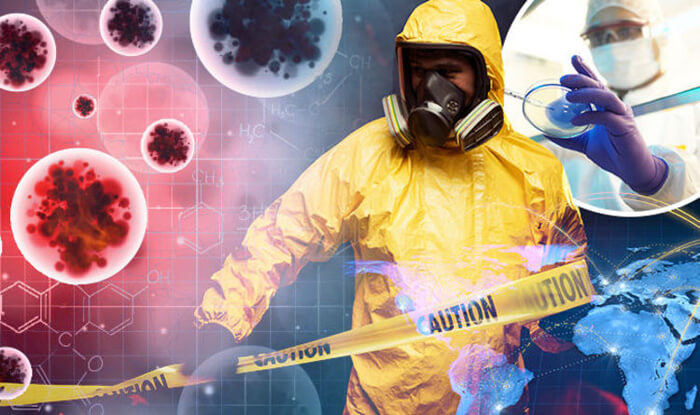 Twice in its history, humanity has faced epidemics that devastated entire countries.
Twice in its history, humanity has faced epidemics that devastated entire countries.
- The first time was in the 5th century. The "Justinian Plague" lasted 60 years and destroyed almost all the countries of the Mediterranean.
- The second pandemic occurred in the 14th century. The Black Death killed up to 60% of Europe's population.
While fatal diseases that can spread worldwide are rare, they do happen. Just a century ago, the Spanish flu killed more than 50 million people (including 3 million in Russia). Ebola outbreaks in recent years have also raised alarm.
Antibiotics, our best defense against disease, are becoming less effective because some strains of bacteria have developed resistance to them.
6. Biological or chemical warfare
 History contains many examples of the use of biological and chemical weapons.
History contains many examples of the use of biological and chemical weapons.
For example, during the Battle of Changde in 1941, the Japanese dropped fleas infected with bubonic plague, which were found in grain, on a Chinese city. The resulting epidemic killed over 7,000 city residents in four months.
And during the Vietnam War (1962-71), the Americans used various chemicals against the Vietnamese, the most famous of which was Agent Orange. According to the Vietnamese Red Cross, 3 million people suffered from the use of this chemical, including 150 thousand children who were born with mutations.
5. The strongest geomagnetic storm
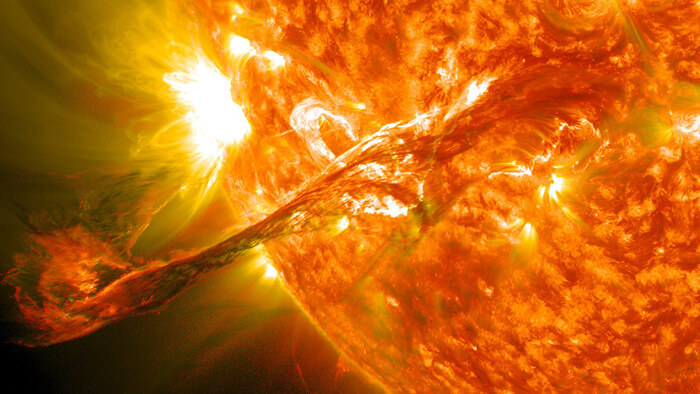 It's funny that one of the most likely options for the End of the World is connected with the Sun. More precisely, with coronal mass ejections (CME), which are huge clouds of solar plasma.
It's funny that one of the most likely options for the End of the World is connected with the Sun. More precisely, with coronal mass ejections (CME), which are huge clouds of solar plasma.
CMEs do not harm people directly, but their effects can be dramatic. By sending charged particles into the Earth's magnetic field, they can cause geomagnetic storms and trigger dangerous electrical currents in power lines. The currents last only a few minutes, but they can knock out power grids by destroying high-voltage transformers.
The largest geomagnetic storm in history occurred in 1859 and was named the Carrington Event, after the British astronomer who witnessed the most powerful solar flare. It was followed by a coronal mass ejection that hurtled toward Earth. It disrupted telegraph systems around the world, and the sun's rays were visible as far away as Cuba.
If another such geomagnetic storm hits today's infrastructure, the consequences would be catastrophic. Vast parts of entire continents would be plunged into darkness for weeks or months, perhaps even years. That's because custom-made transformers the size of a house can't be bought in a regular store. And nuclear power plants could be left without control. Imagine what could happen.
4. Eruption of Yellowstone or another supervolcano
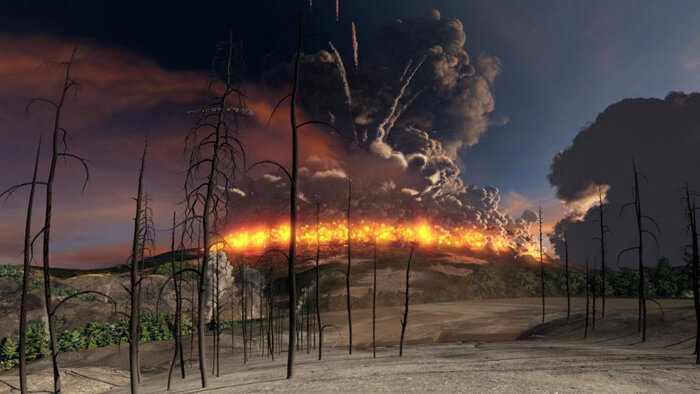 The most relentless threat to our civilization could do far more damage than geomagnetic storms. Every 100,000 years or so, somewhere on Earth, a caldera up to 50 kilometers across collapses and “vomits” a bunch of accumulated magma.
The most relentless threat to our civilization could do far more damage than geomagnetic storms. Every 100,000 years or so, somewhere on Earth, a caldera up to 50 kilometers across collapses and “vomits” a bunch of accumulated magma.
A supervolcano is a volcano that can trigger climate change on Earth. It erupts more than 450 cubic kilometers of magma - about 50 times more than the 1815 eruption of Mount Tambora (Indonesia) and 500 times more than the 1991 eruption of Mount Pinatubo (Philippines).
Geologists "read" the history of such natural disasters in deposits of a rock called "tuff." And the rock "records" show that supervolcanoes tend to erupt again.
Sites that remain active today include the following supervolcanoes:
- Toba on the island of Sumatra;
- Yellowstone in the northwestern United States;
- Long Valley Caldera in eastern California;
- Taupo in New Zealand;
- and several places in the Andes.
3. Catastrophic climate change
 We have just 12 years to keep global warming to moderate levels, according to a report published by a group of United Nations scientists.
We have just 12 years to keep global warming to moderate levels, according to a report published by a group of United Nations scientists.
Projections of the impacts of climate change vary depending on how much the Earth warms (warming of 1 to 3 degrees Celsius is typically modeled). None of the scenarios look good.
- At best, the planet will be ravaged by frequent and strong tropical cyclones.
- Medium-range projections include the loss of most of the world's agricultural land and freshwater sources, with major coastal cities like New York and Mumbai underwater.
- In the worst case, human civilization will come to an end.
Even if countries' current commitments to reduce carbon emissions are met, there is a chance that the Earth's temperature will rise by 3°C, flooding much of Florida and Bangladesh.
2. Fall of a meteorite or comet
 An asteroid 10 kilometers in diameter destroyed the dinosaurs, but a smaller meteorite would have been enough for humans.
An asteroid 10 kilometers in diameter destroyed the dinosaurs, but a smaller meteorite would have been enough for humans.
All life at the impact site would be destroyed, and powerful earthquakes and huge tsunamis could spread across the entire planet. But the lingering effects would be the most devastating. Depending on the speed and angle of approach of an object up to 1 kilometer in diameter, enough particles could enter the air to block sunlight for a month.
Fortunately, large asteroids only hit Earth once every few million years, and "dinosaur-killer" ones only once every 100 million years or so.
1. Nuclear war
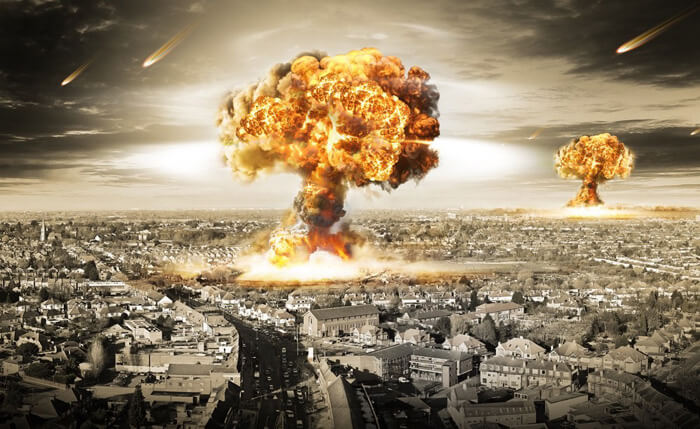 Being instantly killed by a nuclear bomb is not the worst thing that could happen if humanity does enter the phase of the Last War.
Being instantly killed by a nuclear bomb is not the worst thing that could happen if humanity does enter the phase of the Last War.
The worst is a nuclear winter. Clouds of soot and smoke envelop the planet and block out sunlight, causing temperatures to plummet, possibly for decades. The few humans that survive will be unable to grow food; chaos and violence will follow.
The most likely cause of a nuclear war would be an accident or misunderstanding between the world's largest nuclear powers. Consider the incident of September 26, 1983, when the Soviet Oko system, designed to warn of a nuclear strike, signaled that five Minuteman missiles had been launched from the United States.
Then only the endurance of Lieutenant Colonel Stanislav Petrov, who made the decision about the false activation of the "Oka", saved the world from the beginning of the Third World War. It turned out that the system, having analyzed the optical signal from the satellites, mistook the sunlight, which was reflected from the clouds in the upper layers of the atmosphere, for the glow of working rocket engines.

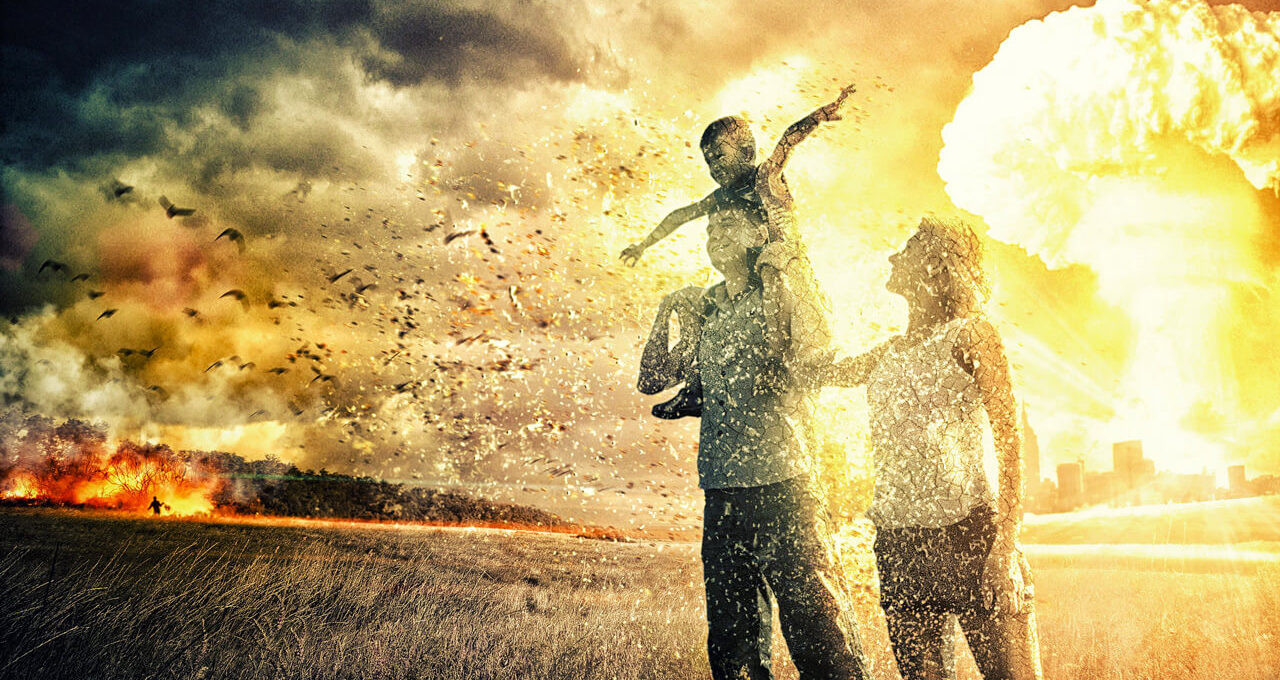












Оставить Комментарий